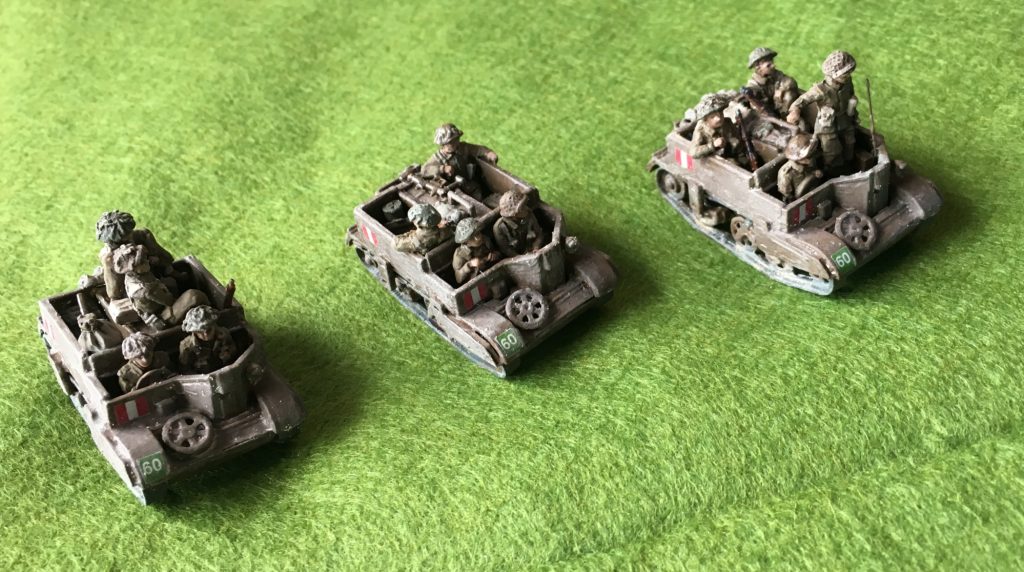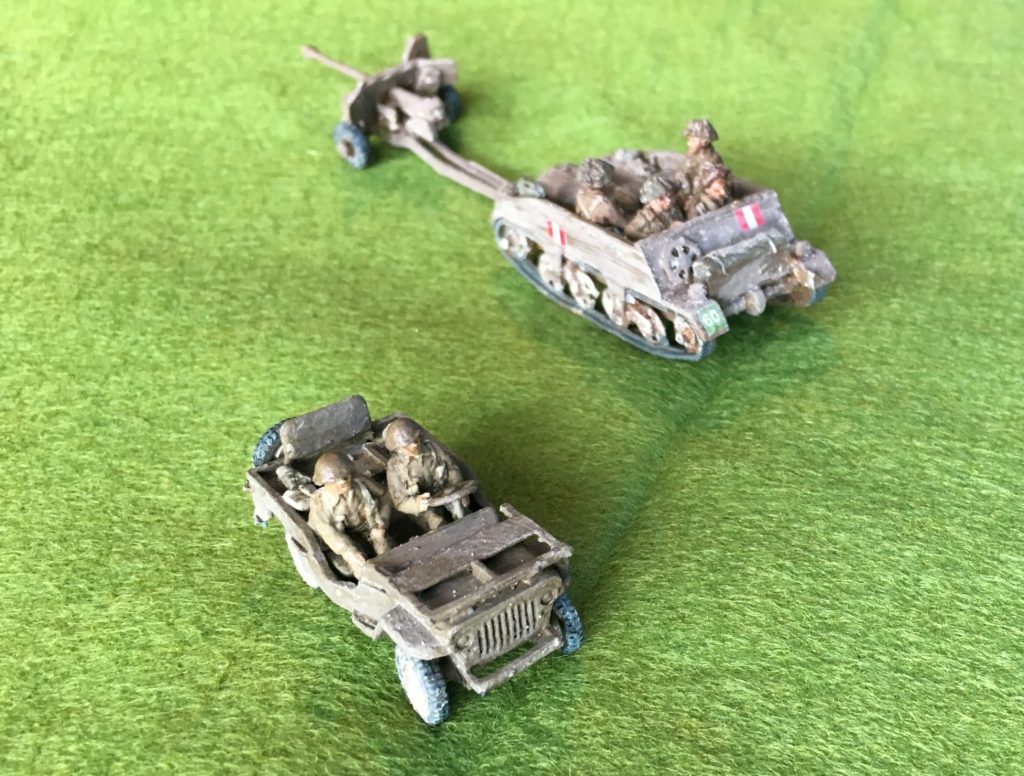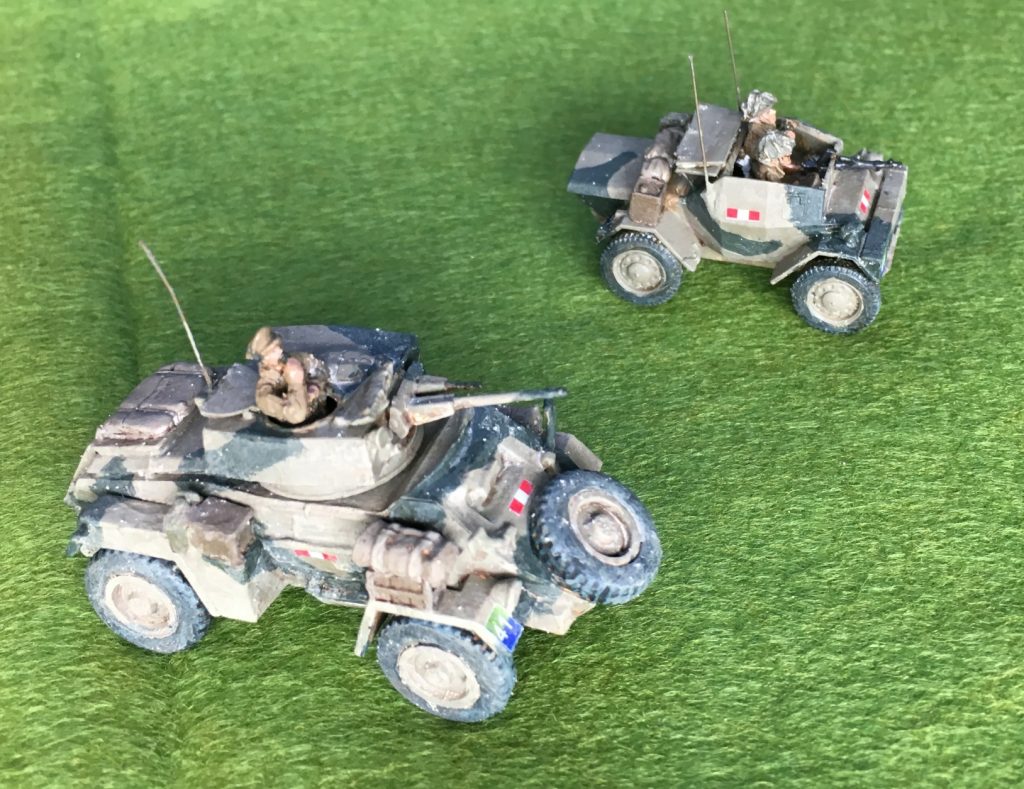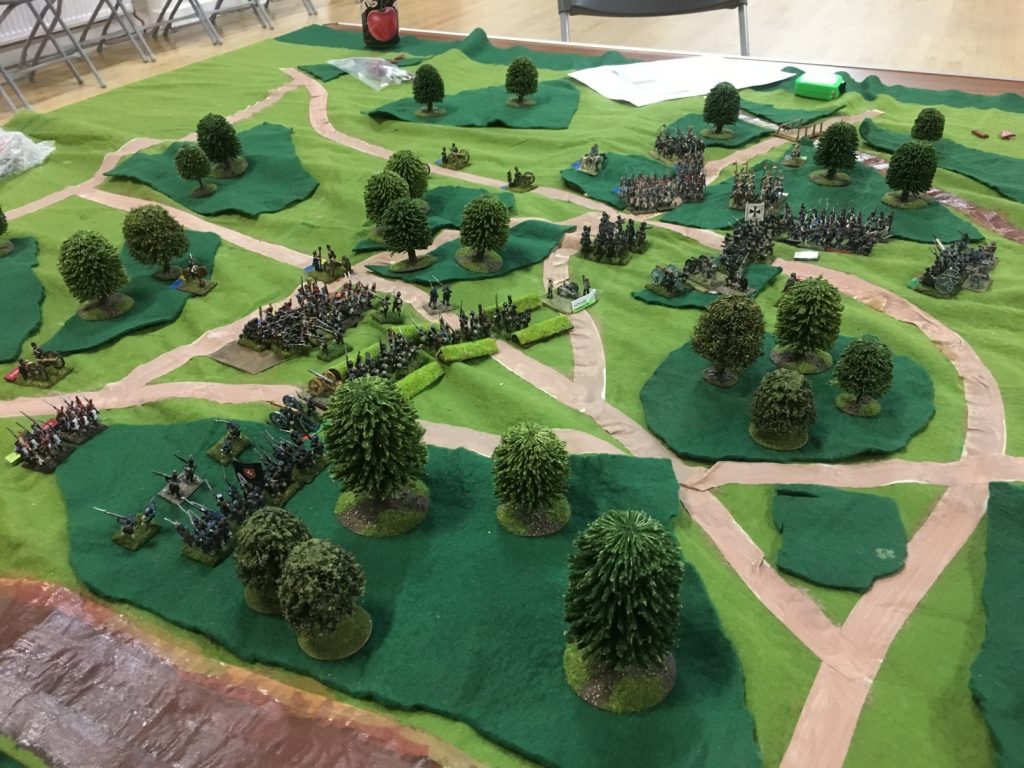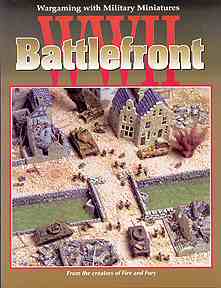
As faithful followers will know, I have been diverted from my original focus on the Napoleonic Wars to WW2, with more modern extensions. This follows my joining a wargames club, and the discovery of some of my old Airfix models in the loft. Since then I have been dragged into the pursuit of a suitable rule system. At the club we have played Fistful of TOWS (FFT), Rapid Fire! and (once) Battlegroup. All have their virtues, but each falls short in important ways. The heart of the issue is that of how movement and firing is organised. Meanwhile I was struck by the idea that the Fire and Fury system, developed for those American Civil War brigade level rules, and used by us in Bloody Big Battles, could work well for WW2. And then I saw that Fire and Fury Games published a set of WW2 rules: Battlefront WW2 (BF). I couldn’t resist. I ordered a copy from Steve Barber Models, which arrived this week. I’m very impressed.
The rules aren’t new: they were published in 2000 (which makes them more recent than Rapid Fire! though). They bear the stamp of that era, and, indeed, of the original Fire and Fury rules, which were groundbreaking at the time. The gaming community has moved on, but not necessarily in a good way. Two things stand out. First is that it uses an Igo-Ugo system, where each side moves all their pieces with distinct phases for firing, moving and close combat, and then hands over to the other side. Modern systems (like Iron Cross and Battlegroup) are based on individual unit mobilisation where movement and firing are combined, and initiative can switch between the sides. This can produce intriguing games, but it slows things down and often makes it hard to relate game play to what it is supposed to be representing – you start playing the rules rather than historical tactics.
The second dated feature for BF is that the rules are heavy. You can read through Iron Cross in an hour or two; Battlegroup doesn’t take much longer. FFT and Rapid Fire! are a bit more detailed, though FFT is much shorter if you ignore helicopters, tactical nuclear weapons and so on. BF is well-written, but hard work: definitely more than Rapid Fire! or FFT. It has taken me several sessions to complete reading it. The reason for that is an interesting one, though. It is not that the rules are over-engineered in the manner of many older rule systems, before Rapid Fire! shook things up. All the tables you need for play are on a two-sided reference sheet; all firing from direct to indirect to airstikes is covered by a single table and not all that many dice modifiers. The armour categories for vehicles aren’t very different from Paid Fire!’s. This is quite a bit cleaner than FFT or Battlegroup. The reason that the rules are so heavy is that they are comprehensive. Two sections are particularly thorough: on spotting and on indirect artillery fire. Other rules writers struggle with these. Iron Cross says hardly anything at all on either. And yet both subjects come to the heart of what war in this era was all about. The rules on indirect fire are particularly good. To be fair both FFT and Rapid Fire! do try to take both of these topics on, but they work that well in practice. To be fair on Rapid Fire!, I haven’t played enough of it to judge properly, in FFT it is just easy for anybody to call down fire on targets that would most likely be invisible. The BF system tries to capture the important differences between the systems of the US, Germany and the Soviet Union. The main rules set concentrates on these nations from 1943 onwards. The British artillery system only gets a brief mention (it was very similar to the German one, apparently) – but it gets more treatment in supplements on North Africa and the late war.
So the heaviness derives from thoroughness, not over-engineering. My feeling is that in fact the rules will play pretty quickly once players have got used to them. I like the thoroughness, even though this is very unfashionable – rule writers nowadays tout how their systems are simple and quick to read. But this comes at a cost. Firstly they leave a lot of things out, leaving the players and games masters with a lot to do to fill in the gaps. Iron Cross (and its derivative Seven Days to the River Rhine) are very bad at this. The other is that they give the players too much freedom and the games start to feel too much like games with toy soldiers without enough reference to history. BF is a welcome break from this. Indeed it could be a useful resource for games masters to help them resolve situations that other systems leave out.
So what about the system itself. On troop representation it is based on company level command, with platoon level missed out. Each model (or “unit”) represents two or three vehicles. Infantry are organised in bases, which represent six to 15 men. A typical infantry company would have a mix of rifle and light machine gun bases. They are mainly designed for 15mm miniatures, with two infantry figures to a base. Distance scale is one inch to 40 yards – essentially the same as Rapid Fire! though that uses 20mm models and a higher figure scale. The rule writers suggest that for 6mm figures you can substitute centimetres for inches, which would put it on a similar ground scale to FFT, though with a lower figure scale.
The play system owes a lot to Fire and Fury, but caters for much more complexity. There is an important difference, though. The Fire and Fury sequence is Manoeuvre, Defensive Fire, Offensive Fire, Close Combat. In BF Offensive fire is brought forward to before Manoeuvre – which is similar to the old Wargames Research Group’s fire then move system. This makes so much more sense than the usual move-then-fire sequence (used, more or less, by all the other systems I have quoted, but most outrageously by FFT) that I struggle to understand why it hasn’t taken over. What it means in BF is that that initiative side starts with its suppression fire, moves in, and then has to deal with defensive fire on those moving units, before resolving close combat. Moving and firing is not allowed in your own turn. At all. The unit can close combat, of course, and a moving unit is free to fire defensively in the other player’s turn. This has a good feel – though the original Fire and Fury system still has something going for it provided suppression fire is brought to the front of the turn, though perhaps more in post-WW2 when moving and firing was more feasible.
I could write a lot more description, as there is a lot to describe. But these rules beg to be tried out. Which is where I bump into a number of problems. My WW2 miniatures are mainly 20mm and the infantry mostly based individually. The rules recommend multiplying the distances by 1.5 for 20mm miniatures – but that is very clumsy. It wouldn’t be hard to modify the quick reference table (only the spotting table needs to be changed) – but unit data comes on cards for each unit type, which would have to be rewritten. Besides there are lot of odd numbers (one inch and five inches especially) which are a bit awkward. The obvious thing to try is 20mm models with the 15mm distances, which actually is probably a similar spacing to using centimetres for 6mm models, but I’m sure the extra space is a good idea.
A bigger problem is that the rules are quite detailed, which will try the patience of my companions on club nights. There are strategies for dealing with this, by keeping the first games simple (no indirect fire, for example). But it could be hard work.
There is another idea. And that is to write my own, rationalised version for our purposes. While the system is not over-engineered I think there are several opportunities to make the rules simpler. I have two possibilities in mind. One is a Rapid Fire! replacement with the same distances but a bigger model scale. Like most systems BF plays as if each model was a single vehicle or gun, even though it represents more. For a larger model scale this doesn’t wash in my view (it is one of my issues with Rapid Fire!), so that there needs to be some provision for damaged units, for example. The second possibility would be an Iron Cross replacement, with one inch to ten yards, and a one-to-one vehicle scale, and with the long-range features written out.
Both types of rewrite would be a lot of work (especially as I would quite like to use d6s, especially 2d6s, instead of d10s). But fun too!




